Previous Chapter « Table of Contents » Next Chapter
When practitioners think about dust control and soil stabilization for unpaved roads, concern about environmental issues is often overshadowed by the practical need for useful and cost- effective solutions. However, like any product intentionally introduced into the environment, dust palliatives and soil stabilizers have the potential to negatively affect natural resources and public health. There is a trade-off between water and air quality when constructing unpaved roads, with or without dust suppressants. Environmental considerations must be central to any unpaved road management program for many reasons, but most importantly because practitioners have a responsibility to the public. This responsibility includes maintaining safe, drivable roads while safeguarding human health and protecting the quality of the air, soil, water, vegetation and wildlife near the roadway (Figure 92). Practitioners also have a legal responsibility to comply with environmental regulations - both those prompting dust control programs in the first place (for example, the Environmental Protection Agency's Pm2.5 and PM10 air pollution standards) and those that address the effects of carrying out road maintenance activities (for example, Section 303(d) of the Clean Water Act and associated Total Maximum Daily Load limits). By adopting approaches to minimize environmental impacts at the initiation of a project, practitioners not only reduce the likelihood of regulatory actions, but also improve public perception of their programs and minimize citizen complaints.
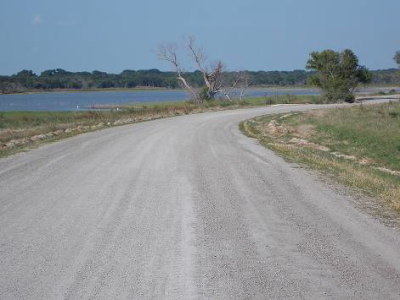
Figure 92. Photo. Road near lake.
Estimating the environmental impacts of applying dust palliatives is complex and difficult. Much of this difficulty is attributable to three main issues:
Road manager concerns with regard to the potential environmental impacts of using chemical treatments differed across the locations visited. All road managers were aware of the debate on the potential impacts of chlorides on the environment, but were concerned that no similarly priced alternative appeared to be available that would provide the same level of service and have no significant potential environmental impacts of its own. Most road managers were concerned about the lack of consistency in MSDSs, specifically the quality and variation of environmental information among manufacturers. Although no environmental testing was undertaken during the scan tour, no visible negative environmental impacts were observed, apart from some leaf discoloration on a thistle growing in a side drain that had an accumulation of fine material eroded from the wearing course (Figure 93). No similar observations were made on any of the other roads visited, including those where magnesium chloride had been rejuvenated on an annual basis for up to the past 22 years (Figure 94). One of the product developers visited was placing considerable focus on trying to develop new products, testing blends of magnesium chloride with other types of additive to reduce the introduction of chlorides into the environment, and engineering new products for specific site conditions (that is material type and characteristics, climate, and traffic) (Figure 95).
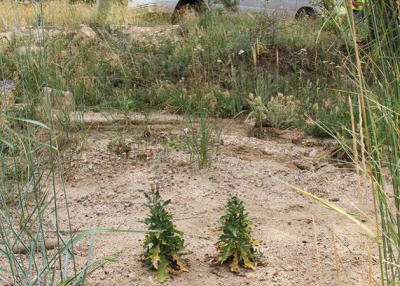
Figure 93. Photo. Concentrated chloride in side drain.
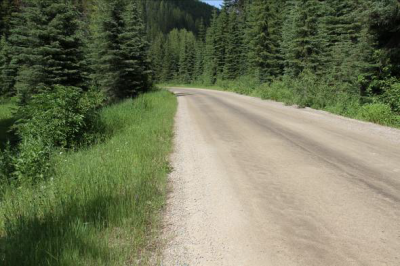
Figure 94. Photo. Road with regular annual magnesium chloride applications.
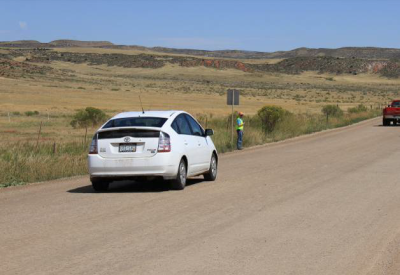
Figure 95. Photo. Engineered dust control treatment.
One of the first steps to improving knowledge of environmental impacts of unpaved road chemical treatment is improving knowledge about the products themselves. A lack of product information begins at the most basic level - the manufacturing process - and is because of two main reasons:
Do the following to overcome these issues:
A second step is to ask for test results from an independent laboratory showing that the product will not have any significant potential safety or environmental impacts to crews, road users, fauna, flora, surface and ground water quality, or to aquatic organisms. Environmental tests should include chemical composition to verify if a formulation contains hazardous substances or heavy metals that may leach into surface or ground water, and tests to assess any potential negative impacts to aquatic organisms (typically fish and water flea [Figure 96]) and to roadside vegetation. Suggested environmental tests are provided in Table 5. Also be aware that "inactive ingredients"
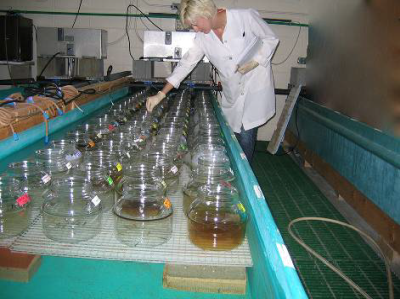
Figure 96. Photo. Environmental Testing.
and additives such as surfactants can also create environmental risks. For example, the addition of a surfactant can dramatically change both the toxicity of a bio-based oil product and its movement in the environment. Again, the product should not be considered if the vendor is unwilling to or cannot provide this information.
| Test | Method number |
|---|---|
| Volatile Organic Compounds (VOC) |
EPA 8260 |
| Semi-volatile Organic Compounds (Semi-VOC) | EPA 8270 |
| Heavy metals |
Various methods |
| Modified Synthetic Precipitation Leaching Procedure (SPLP) | EPA 1312 |
| Acute toxicity tests with fish, macro-invertebrates and amphibians | ASTM E729 |
| Three-brood, renewal toxicity tests with Ceriodaphnia dubia | ASTM E1295 |
It is also important to know what happens to a product after it is introduced into roadside ecosystems. Although dust palliatives are designed to bind to road materials, products can and do enter the environment through several pathways. During initial application, products can be over- sprayed onto adjacent roadside habitats, or be washed away if rain occurs before curing is complete. After curing, products bound to soil particles can still be washed or blown away. How and at what rate products enter and move through ecosystems will differ between different products and in different environments. A basic understanding of the chemistry of the product (for example, water solubility, molecular size, and chemical composition) and the mechanism of action will provide clues as to the potential migration pathways of the product. Information is also needed on how products weather and break down once exposed to rain, UV-radiation, and temperature fluctuations. Products in the original and weathered forms may have the potential to be picked up by organisms and then be transferred throughout the food chain, although almost no research has been done on understanding and quantifying this issue. Given the lack of data, the best strategy is to minimize opportunities for the product to enter the environment in the first place through a combination of wise product selection and responsible application (Figure 97).
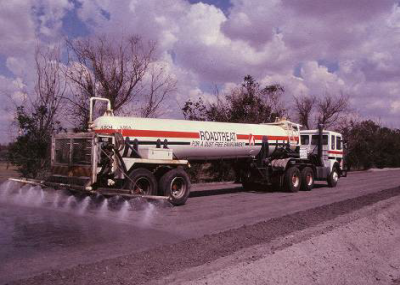
Figure 97. Photo. Road preparation to minimize environmental impact.
Another critical environmental knowledge gap involves uncertainty about which environmental impacts are the most important to consider. Very little well-documented, long-term scientific monitoring of the impacts of dust control and road stabilization exists anywhere in the world.
Therefore, in addition to working with accredited environmental testing laboratories, practitioners should undertake some monitoring of their own (Figure 98) until more formalized and representative environmental testing procedures are developed and adopted. The final chapter of this Handbook notes that the U.S. Geological Survey is performing work on this issue. Environmental performance monitoring is complicated by variability both in product composition and geography. Different types of products (for example, chloride- versus hydrocarbon-based) will have different impacts on the environment, while concerns in arid habitats in the southwestern United States will be very different from those for a forested, stream-rich habitat in the northwest. Despite this variability, however, a basic list of impacts to be on the lookout for is provided in Figure 99. It requires being observant, noticing changes, and basically keeping your eyes open. Also provided is a list of 10 things that practitioners can do to strive for environmental excellence, despite not knowing all the answers (Figure 100).
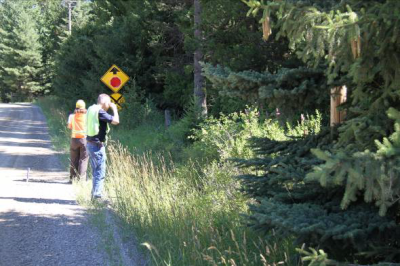
Figure 98. Photo. Monitoring roadside vegetation.
BE ON THE LOOKOUT FOR THESE IMPACT INDICATORS
Figure 99. List. Visual signs of environmental impacts from chemical treatments.
Balancing the negative and positive impacts of dust control programs is a difficult undertaking, given our incomplete understanding of the potential negative impacts of different products. Road managers should also remember that a "do nothing" approach may also have significant negative environmental impacts (for example, increased loss of fines and aggregate into roadside habitats). Until such time as this issue has been adequately researched and documented, it is suggested that practitioners and road managers request the results of the independent laboratory environmental tests discussed above, determine what actions can be taken to minimize the impacts (for example, understanding material properties and determining appropriate application rate, mixing in as opposed to applying as a surface treatment, compacting the road, not applying close to environmentally sensitive sites, etc.) and then weigh any potential negative impacts against the benefits of improved road safety, improved health and living conditions, reduced airborne particulate matter, reduced particulate matter in streams, reduced gravel replacement and reduced maintenance. Depending on the type of additive used, mitigated negative impacts can often be tolerated in the light of the positive impacts of treatment in all but the most sensitive locations.
TEN DO'S - AND THE REASONS WHY
Maintaining such records is extremely useful for this growing body of knowledge. If you are systematic about it, such data can be good supporting evidence for the products you choose to use or not use.
Figure 100. List. Ten actions to minimize environmental impacts.